Testing The PHASE M645-GFX E with Mamiya, Phase One, and Schneider Lenses

TL;DR: Works perfectly on newer Silver Ring and Blue Ring lenses, less perfect on older Mamiya lenses. Flare is another issue. Overall, it is really nice to use these lenses with the GFX100s, and get metadata and aperture control.
Recently, Kipon released a new adapter for controlling the apeture of Mamiya, Phase One, and Schneider-Kreuznach lenses. Some initial users have reported some interesting EXIF issues, so lets take a look at how the EXIF data presents in Lightroom, Capture One, and exiftool.
Without further ado, our first lens is the 55mm F2.8 Mamiya "Plastic Barrel".
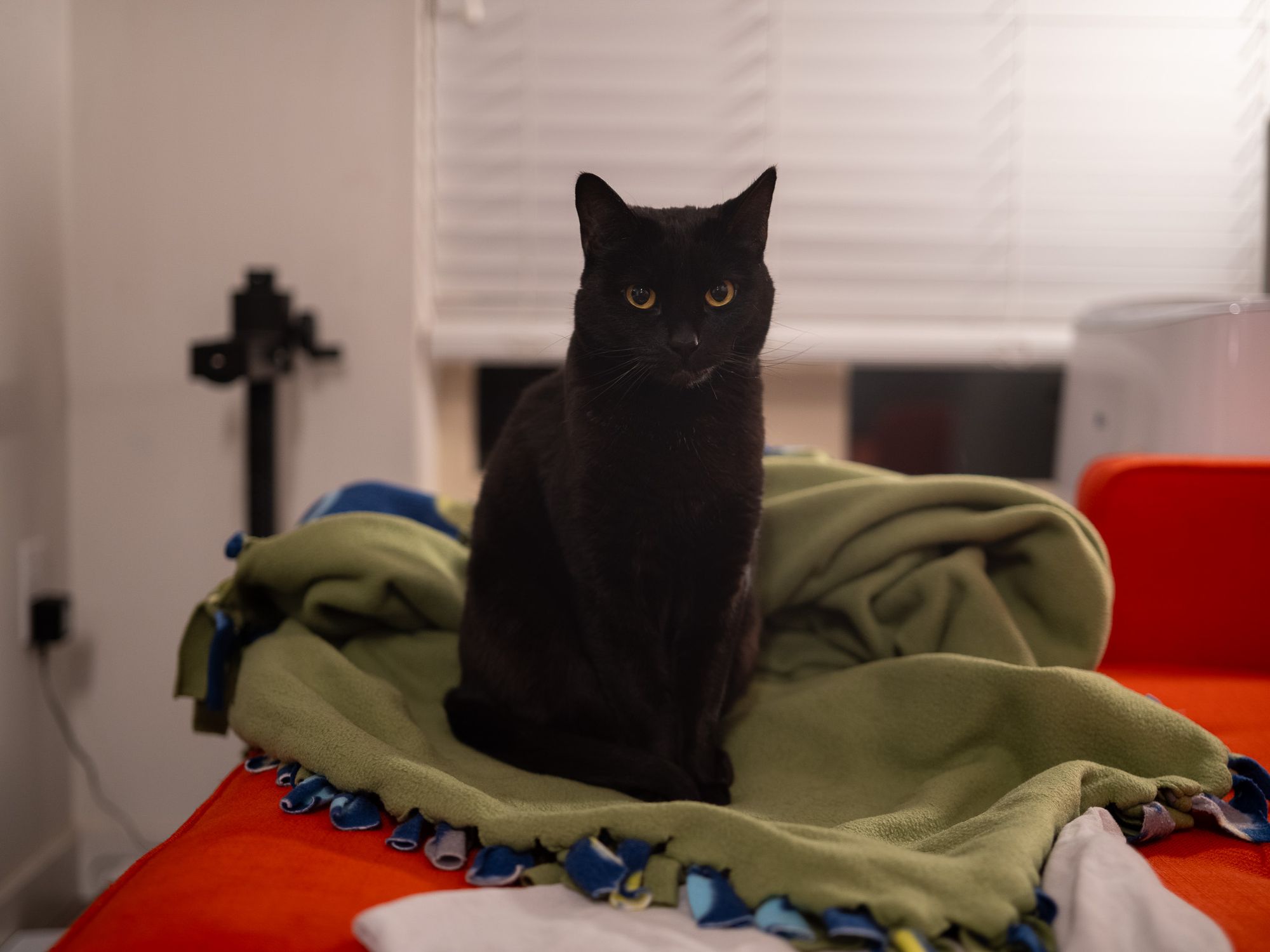
The EXIF data is shown in Lightroom and Capture One 23. exiftool has it all, including the make! There are fields with the 35mm equivalent too. The "Lens Serial Number" is the adapter serial though. Not a big deal, and I don't think the serial of these lenses is even stored in them, that was an upgrade only brought with the Blue Ring line of Phase One/Schneider lenses.
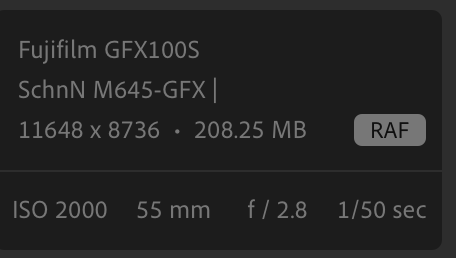
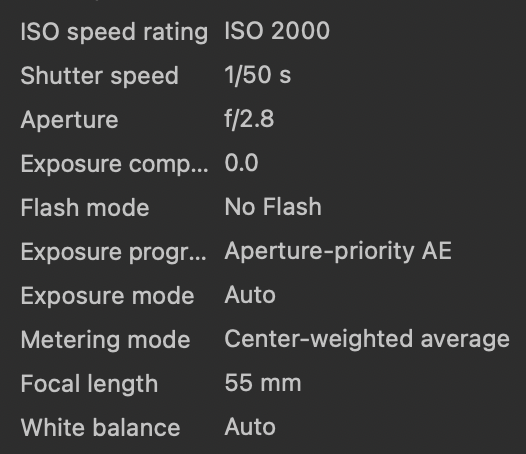
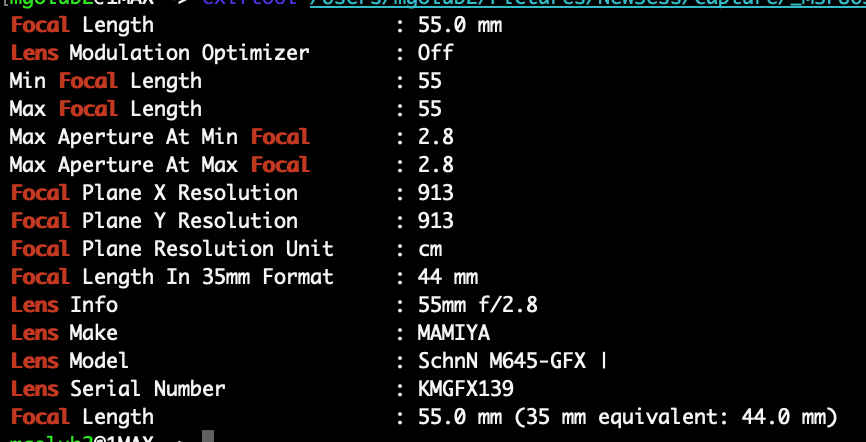
Moving on, let's look at our first 80mm, also a Mamiya plastic barrel. Rosie is more displeased! She knows how much this lens flares in IR. ICK!

Weirdly, this lens shows up as the 55mm as well? Data is shown in Lightroom and exiftool, Capture One sees nothing still. I doubled checked - this is what shows up when you use the 80mm F2.8 Plastic Barrel.
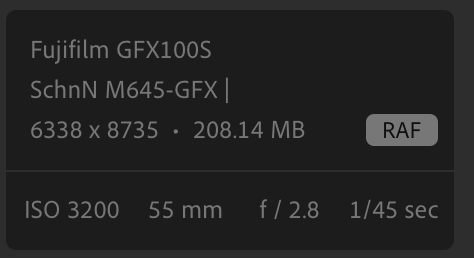

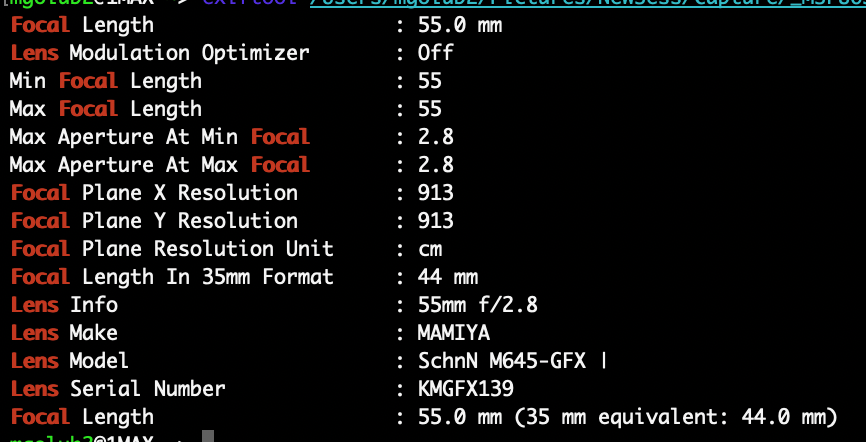
With the second 80mm I have, the Schneider 80mm LS F2.8, the story is different, likely because it is the second newest style - "Silver Ring". This lens actually works with AFr on my Phase One XF, which is supposed to be Blue Ring only! The image below is the same as the feature image, taken with this lens:
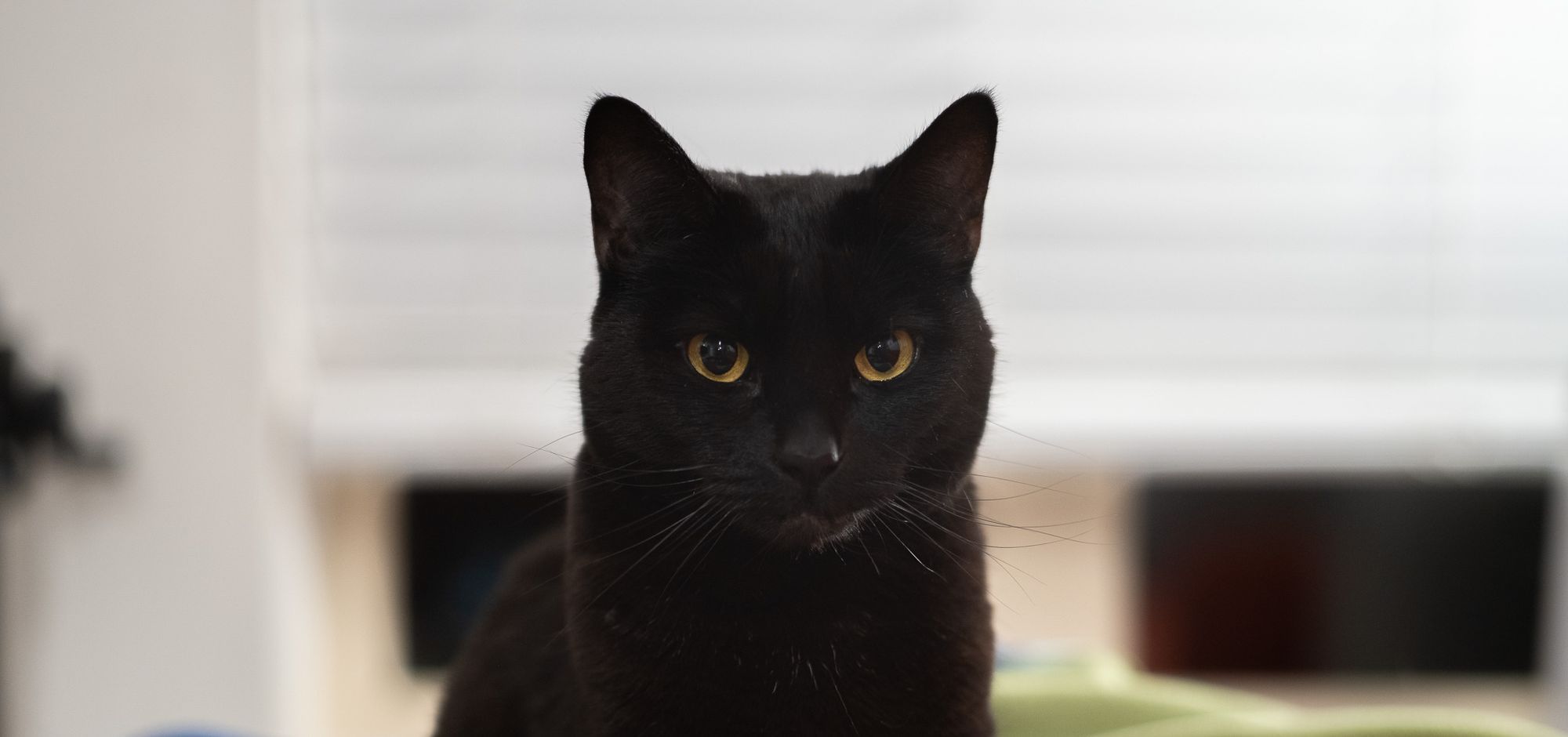
Lightroom, Capture One, and exiftool all see the data from this lens just fine. Astute reader will note the weirdness going on with the adapter name changing from SchnN to KIPON. (Why???) Weirdly, the lens serial has changed too? It's not related to the actual serial best I can tell.

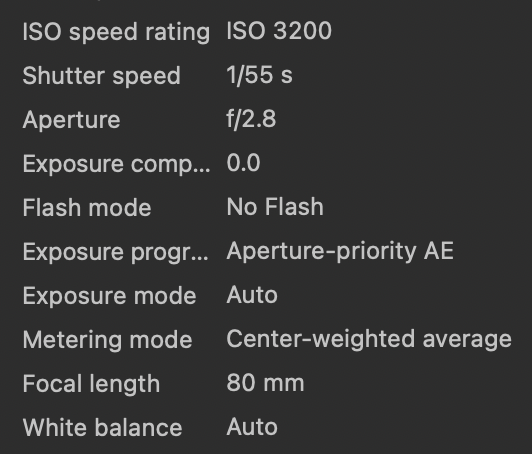
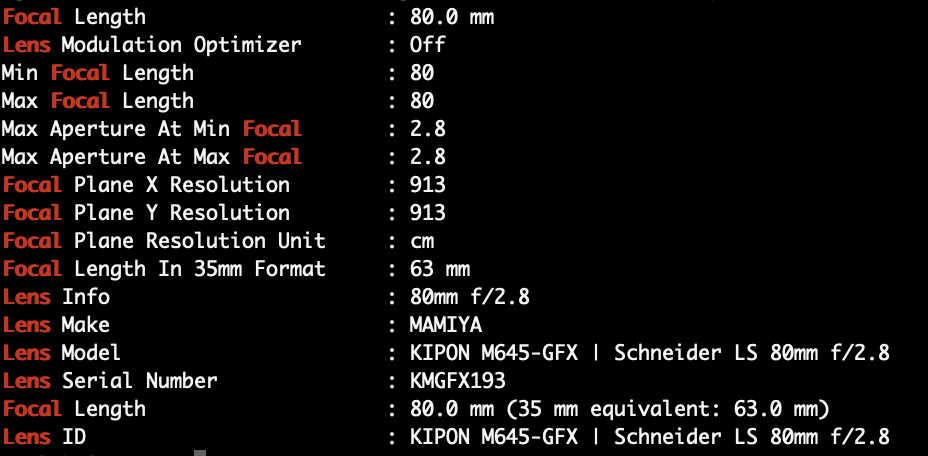
Next, we have the fan favorite Schneider 110mm F2.8 LS. Rosie is still skeptical, sadly.

This lens is much sharper than the other lens we have tested so far, with the 55mm coming the next closest. Look at this 100% crop (flare and VERY light absorbing fur make this low contrast though...) :

This lens behaves as expected, like the 80mm LS, in terms of EXIF:
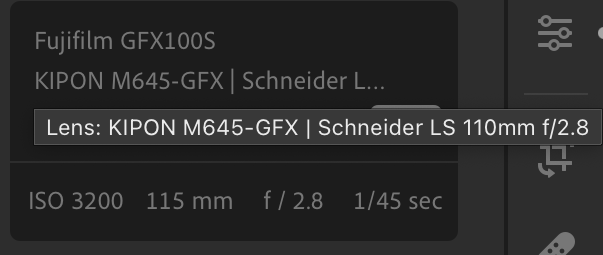


Wait - 115mm? For some reason, the 110mm LS is 115mm in most of the EXIF data, except for the 1 field Lighroom and Capture One seem to use. I wonder if this is a bug, or that the 110mm is really a 115mm but nobody in marketing would go for that?
Moving onto our next pair of lenses, we first look at the Phase One 120mm F4 Macro AF - a fairly rare lens if I am not mistaken, not the Blue Ring, but still with autofocus. It was introduced in 2011. This is technically a Mamiya lens, we also came branded as Phase One at the time, and based on the number of lens contacts, is the "D" revision with a 16bit vs. 4bit CPU - as we would expect since this was one of the last lenses produced before the Blue Ring line. Rosie is alarmed by it's size, little does she know it's a cute lightweight compared to the 120mm LS Blue Ring...
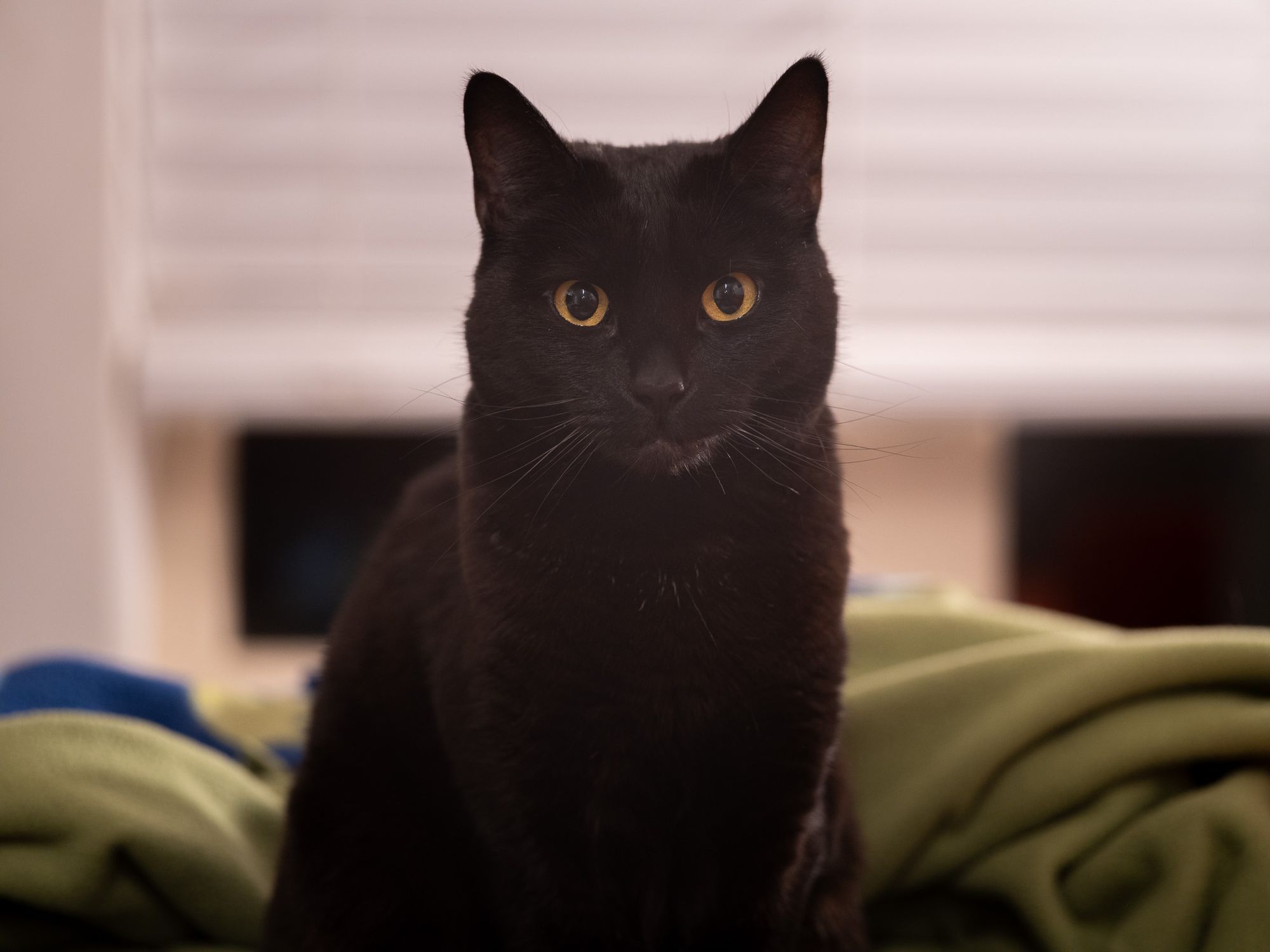
This lens is so sharp you can see the reflection of my place in Rosie's eye:
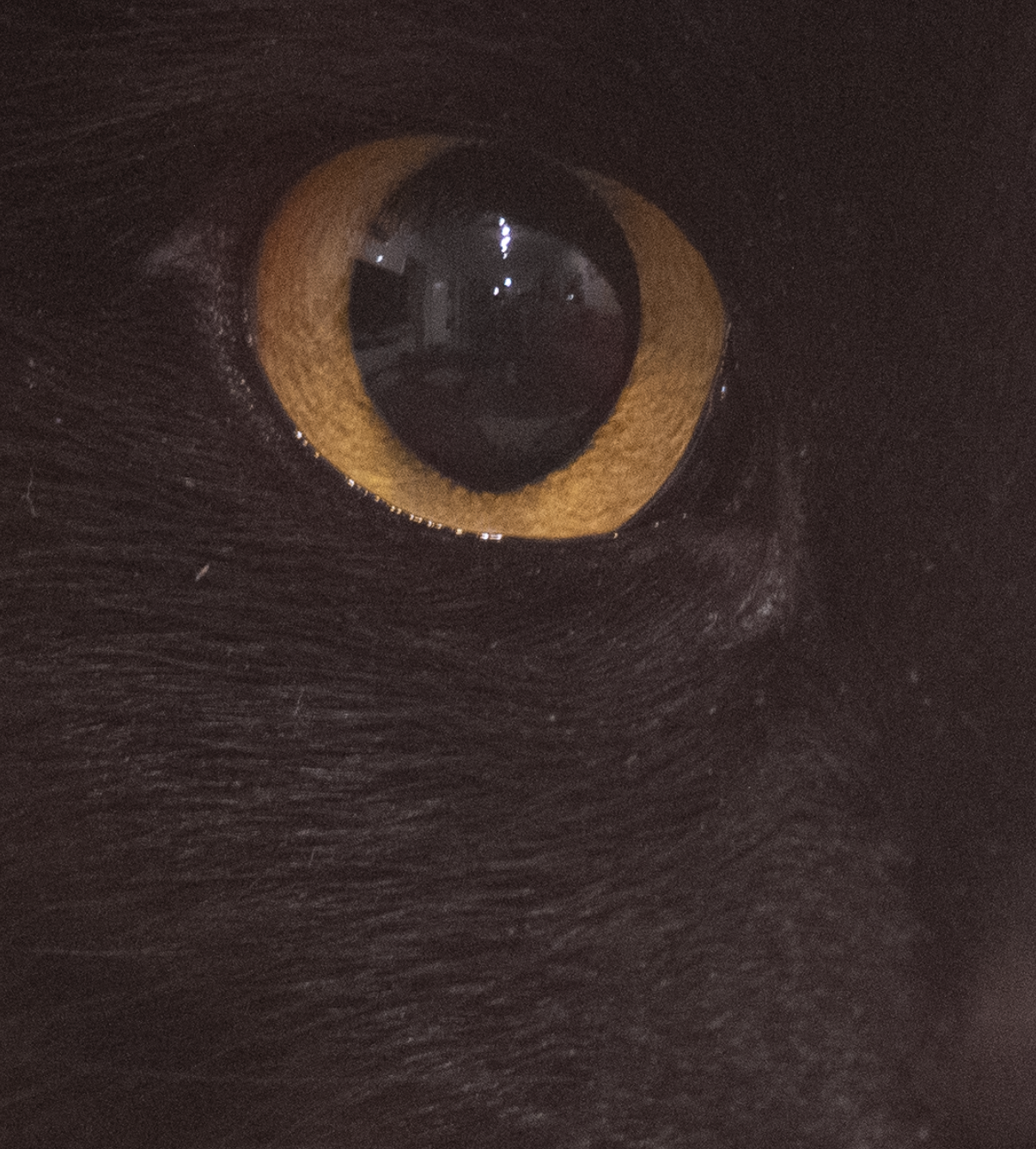
Again, similar story to the 80 and 110 LS lenses, again with the addition of the extra 5mm in focal length (maybe?). It also does not report the AF apart of the name, which is fine. The make comes up as Mamiya, which is not unexpected really.
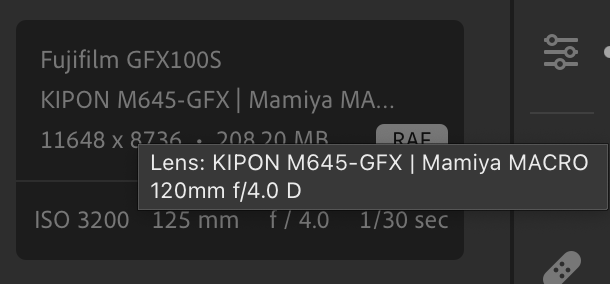
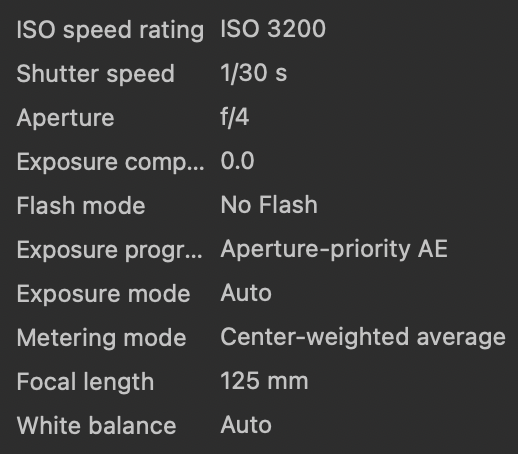
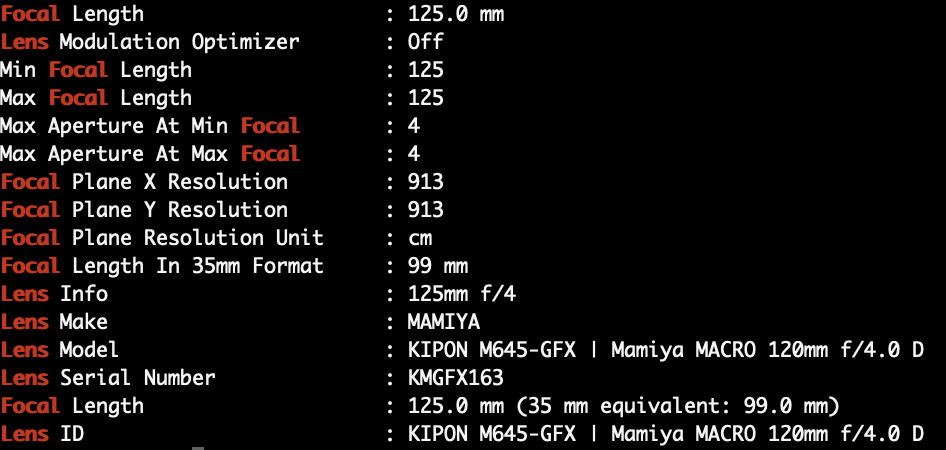
Next... the very heavy and wide Phase One 120mm F4 LS Blue Ring. Similiar optics if not exactly the same to the first Macro, but with the addition of a leaf shutter for higher flash sync speeds on the XF platform.
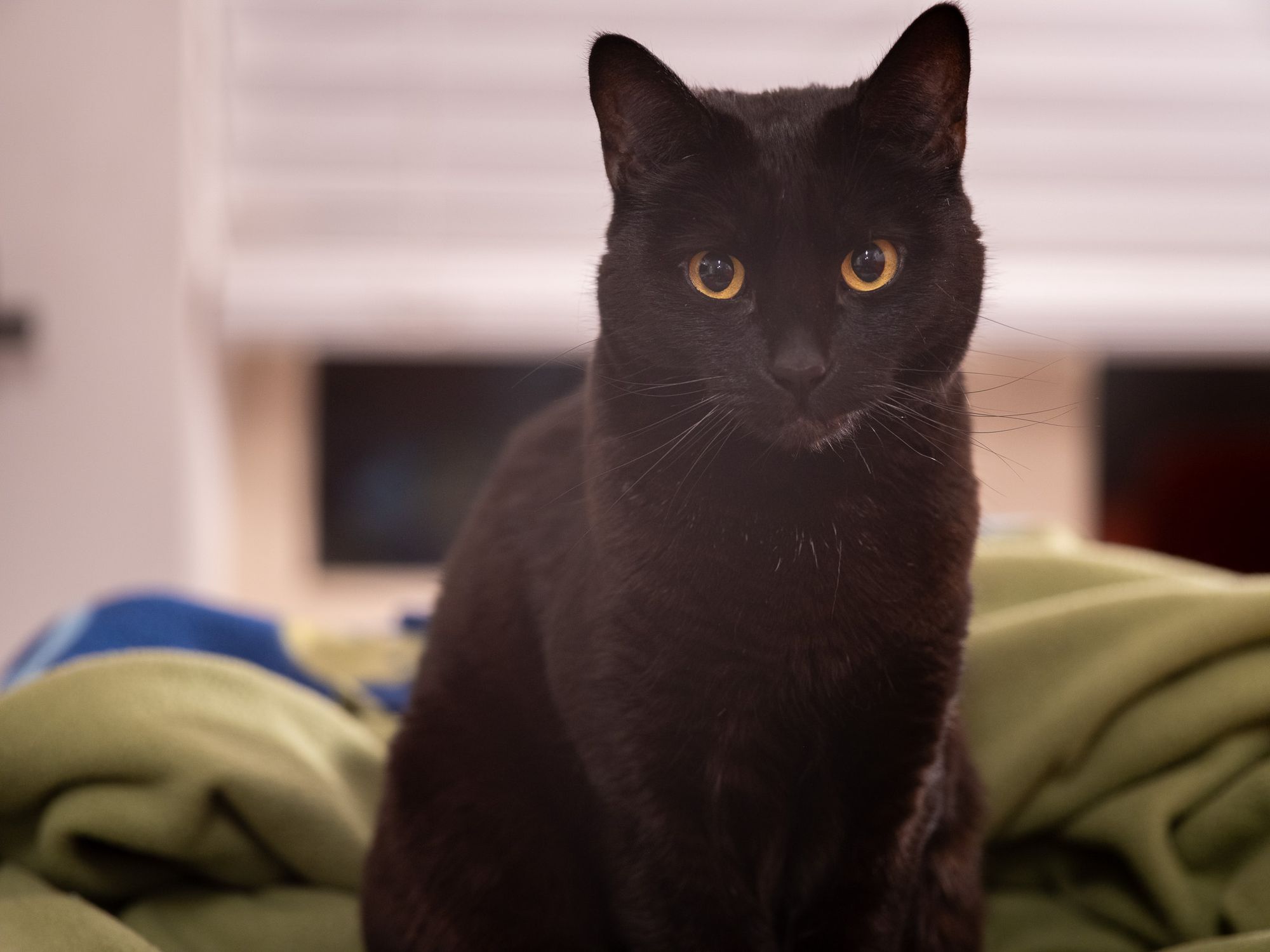
Interestingly, MACRO is left out of the name this time, and the focal length is correct:
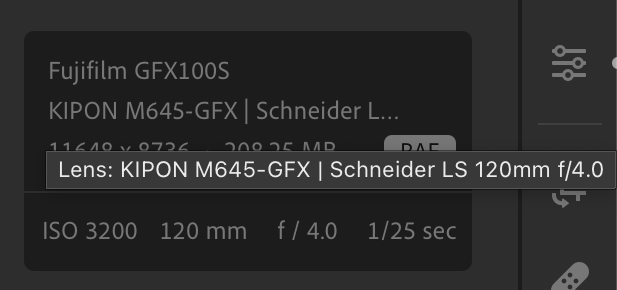

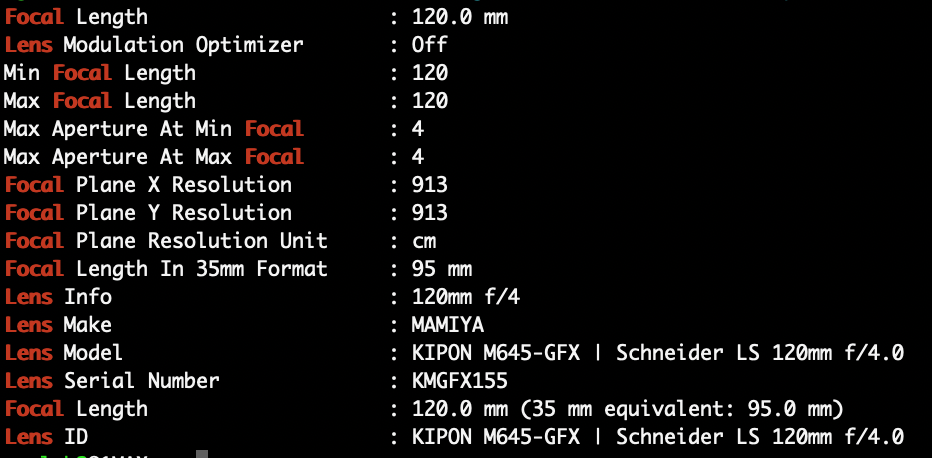
Next, the venerable Mamiya 210mm plastic "clutch" barrel - I think these were introduced at the same time as the 80mm and 55mm plastic barrel lenses that don't have a MF/AF clutch, but I could be wrong. I really like this lens for IR landscapes, it's significantly sharper than my 300mm F4.5 APO...weirdly.
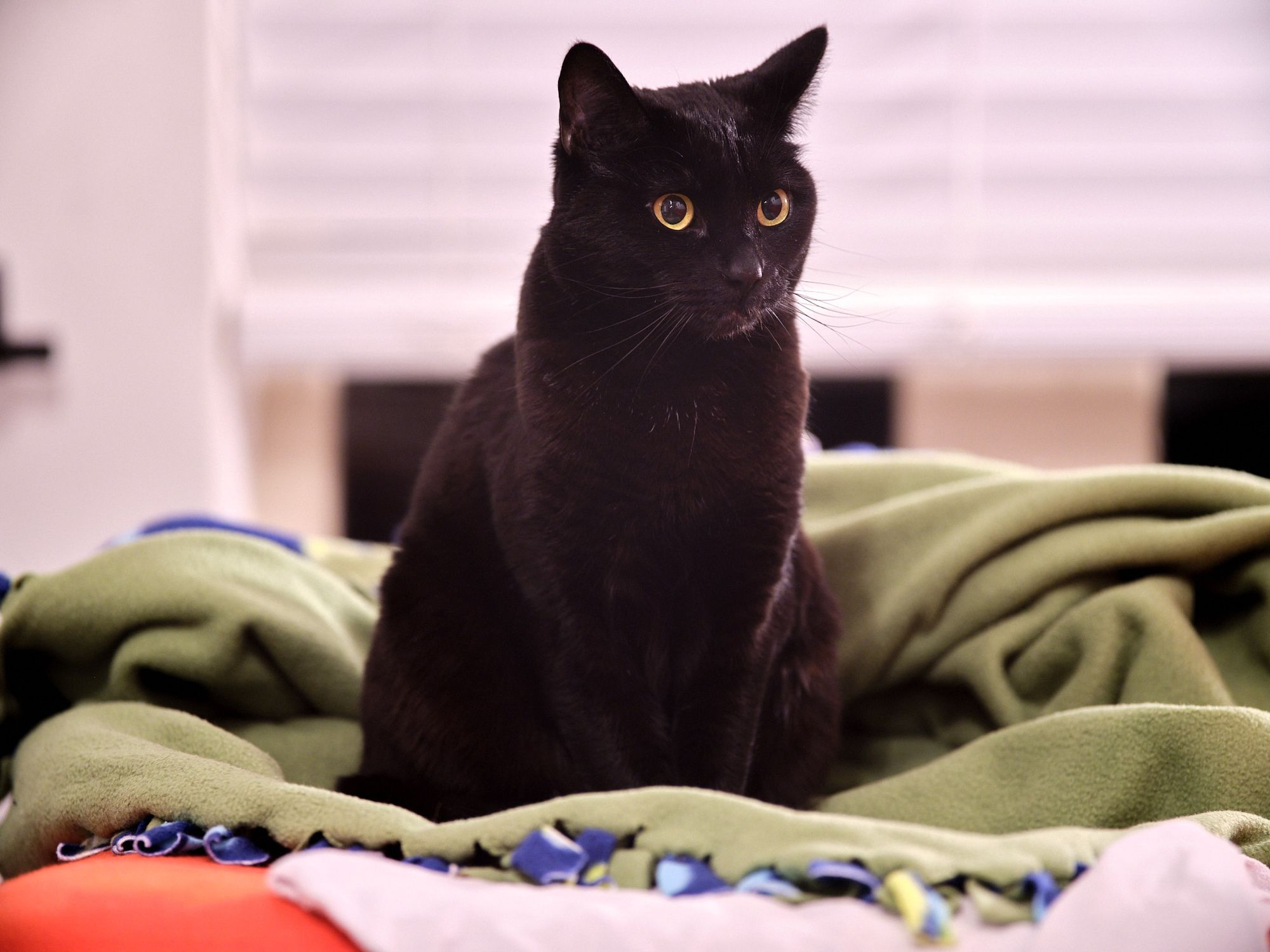
Looking at the 100% crop, you can see it can resolve a lot, if my shutter speed was not 1/18th and Rosie would stay stillish.

This lens has the biggest delta so far in how the focal length is reported, at 190mm. This seems like a software bug with the adapter vs. the lens being 20mm shorted than advertised. Maybe something with the 4 bit/16 bit difference? It otherwise acts like the older 80mm and 55mm, with no name in the Lens Model except for the adapter. Well, it's still KIPON vs. SchnN compared to those, so not exactly.
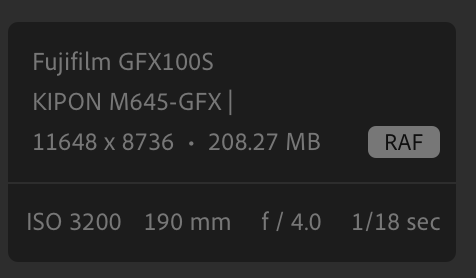

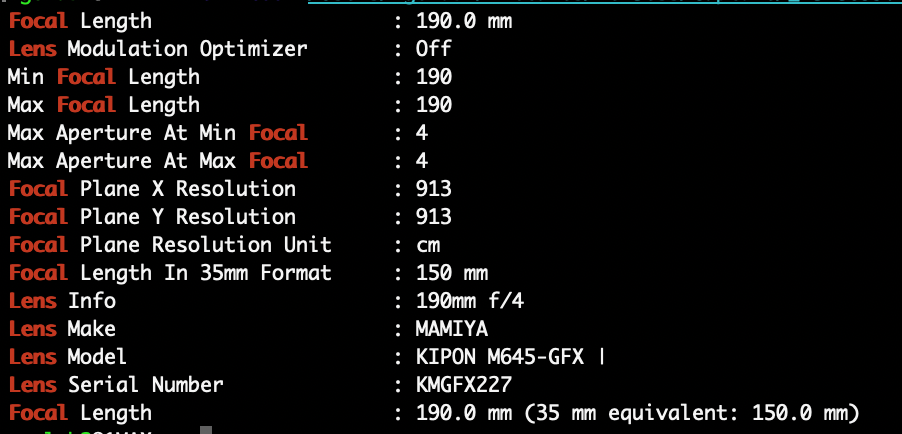
Finally, we have the Mamiya 300mm F4.5 AF APO - the longest autofocus lens for the Mamiya / Phase One 645 system. My copy is not great sadly, perhaps it was dropped and decentered by a previous owner. Rosie is happy to finally be on the home stretch:
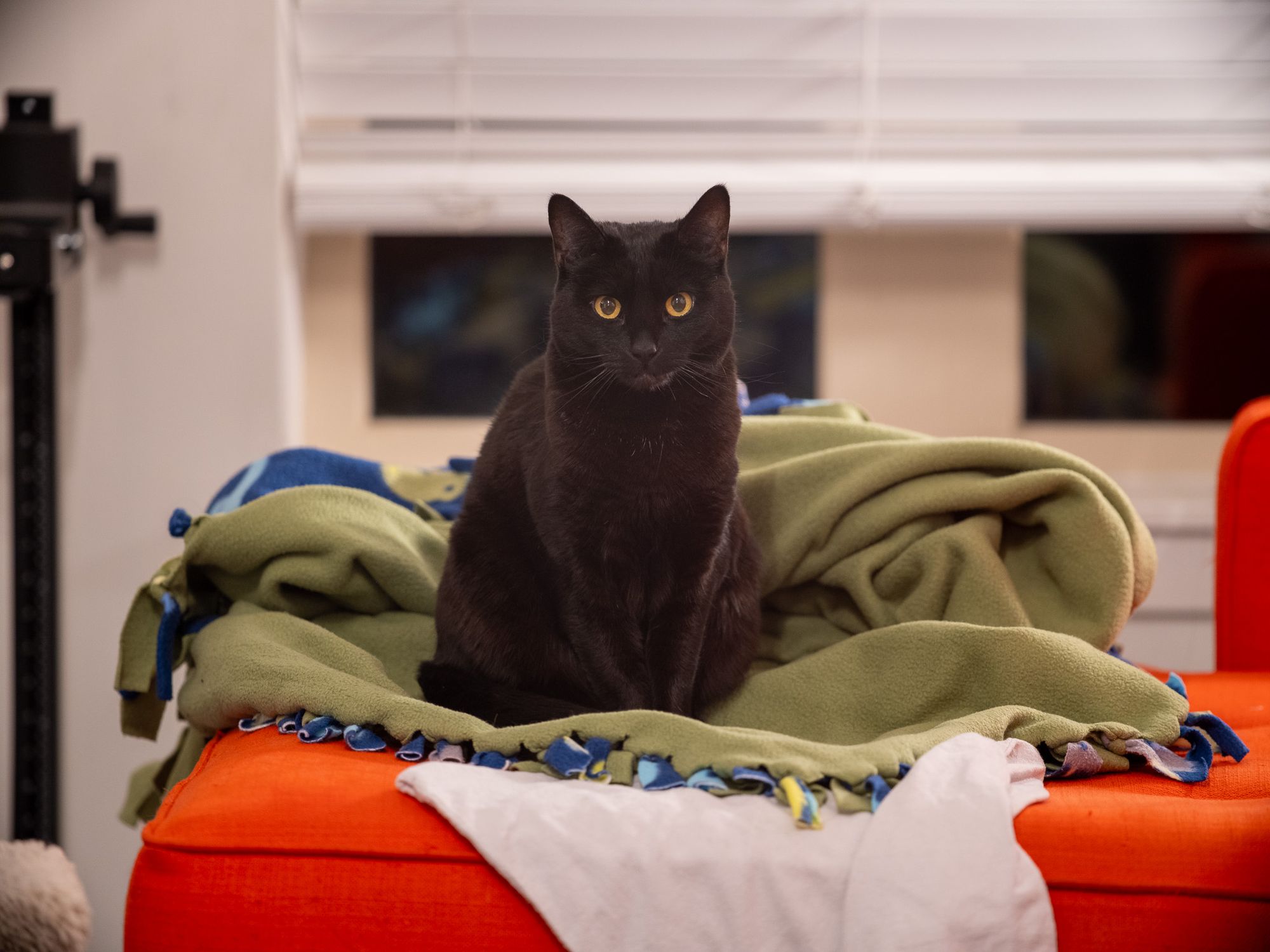
Like the 55mm, 80mm, and 210mm, this lens does not report information as nicely as the newer lenses, and the focal length is off by an even larger margin - 50mm. One other important note - for some reason, this lens vignettes pretty hard with this adapter on the GFX. Which really should not be the case given this lens was designed for 54x40mm film and not a smallish 44x33mm CMOS sensor. This is counterintuitive to me - wouldn't the wide angles vignette before a probably much more tele-centric telephoto lens?
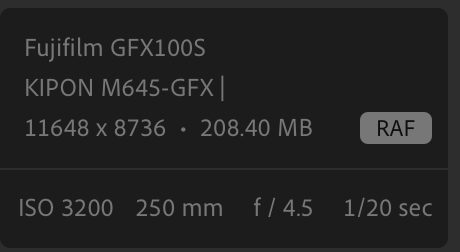
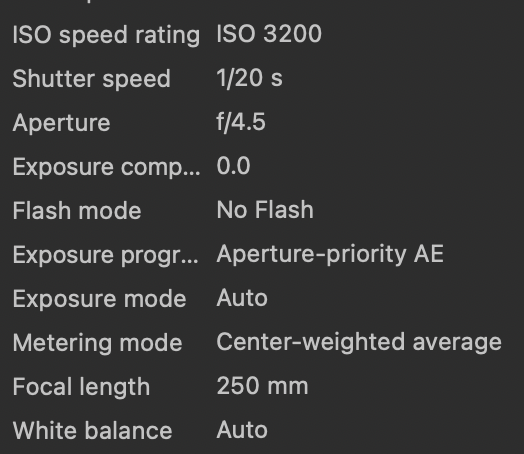

In Conclusion
The adapter works well enough for me, copying the relevant metadata even for the older lenses, if slightly incorrect at the short end and more so at the long end. I really like the Mamiya/Phase lens rendition, so it is great to use them on the GFX100s with full apeture control.
I do wish that flare was better controlled - I'm planning on trying to paint the inside of my adapter with Black 3.0 - a very black paint, in hopes of reducing the amount of internal reflection. If that does not work, flocking should. This may make the 300 totally unusable though, if the vignetting is worsened by reducing the internal diameter of the adapter more.